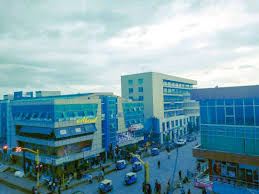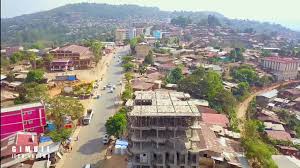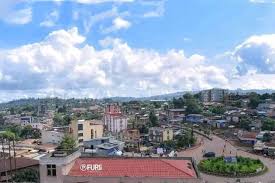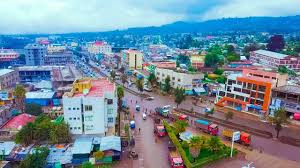Jimma is the largest city in southwestern Oromia Region, Ethiopia. It holds a special zone status in the Oromia Region and is surrounded by the Jimma Zone. The city has a latitude and longitude of 7°40′N 36°50′E, making it strategically significant for transportation and trade in the area. The city was reorganized administratively as a special zone before the 2007 census. Jimma has a rich history, cultural significance, and economic importance in Ethiopia, particularly in the coffee industry.
History
Jimma has a deep-rooted historical background dating back to pre-Oromo times. Before the Oromo migration to the region in the 18th century, Jimma’s northern suburb, Jiren, was the capital of the Kaffa province. The city was originally called Hirmata before the Oromo settled in the region. By the 19th century, Jimma was an essential city along the caravan route between Shewa and the Kingdom of Kaffa. Its location six miles from the palace of the king of Jimma made it a significant political and economic hub.
19th Century Jimma
In the early 19th century, Jimma became a vibrant marketplace that attracted thousands of people from neighboring regions. According to the sociologist Donald Levine, the city’s market was a melting pot for Amhara traders from Gojjam and Shoa, Oromo from various Gibe kingdoms, and other ethnic groups, such as the Omotic groups, Timbaro, Qabena, Kefa, and Janjero. The city became a dynamic trade center, where a variety of products and goods were exchanged.
Jimma’s prominence continued to grow throughout the century. By the late 19th century, it was visited by foreign explorers such as the German Oscar Neumann, who described it as a rich land inhabited by the Galla (Oromo) people, with a strong Islamic presence. Neumann also remarked on the clever leadership of Abba Jifar, the then king of Jimma, who strategically aligned with Emperor Menelik II, allowing Jimma to retain its autonomy and wealth.
Jimma under Italian Occupation and Beyond
The present city of Jimma developed on the banks of the Awetu River during the Italian occupation in the 1930s. The Italians aimed to make Jimma a significant center for Islamic education and established an academy to teach Islamic jurisprudence (fiqh). The city was also part of the East African Campaign during World War II. The Italian garrison in Jimma was one of the last to surrender to Allied forces, holding out until July 1941.
After the death of Abba Jifar II in 1932, the Kingdom of Jimma was formally incorporated into Ethiopia, and Jimma lost its status as an independent kingdom. Following the 1942 reorganization of Ethiopian provinces, Jimma became part of Kaffa Province. The city continued to thrive as a market town and was known as the largest market in southwestern Ethiopia during the early 1960s, attracting up to 30,000 people on market days.
Modern Era
In the late 20th century, Jimma experienced political turmoil. In April 1975, radical college students, known as “zemacha,” were sent to the city to organize local peasants as part of the Derg regime’s land reform efforts. These efforts led to conflict with local landowners and the police, resulting in the deaths of 24 students. The unrest highlighted the region’s social and political challenges during the Derg era.
Jimma was also impacted by the Ethiopian Civil War, with the Ethiopian People’s Revolutionary Democratic Front (EPRDF) capturing the city just days before the end of the conflict in May 1991.
In 2006, the Ethiopian government secured a loan of $98 million from the African Development Bank to pave the 227-kilometer highway between Jimma and Mizan Teferi, improving transportation infrastructure and fostering economic growth.
Climate
Jimma enjoys a relatively cool tropical monsoon climate (Köppen classification: Am). The city experiences a long wet season that stretches from March to October, with rainfall contributing to the fertile agricultural lands surrounding the city. Afternoon temperatures in Jimma are warm year-round, typically ranging from 24°C to 27°C (75°F to 80°F), while mornings are cooler, with temperatures consistently between 12°C and 13°C (54°F to 55°F).
This climate, combined with the region’s fertile soil, makes Jimma ideal for agriculture, particularly coffee production, which plays a significant role in the city’s economy.
Economy and Agriculture
Jimma is one of Ethiopia’s most important agricultural regions, renowned for producing some of the best coffee in the world. The Jimma Coffee Research Center, founded in 1968, is located in the city and plays a key role in improving coffee yields and researching agricultural techniques. The center, operated by the Ethiopian Institute of Agricultural Research, also focuses on enhancing the production of spices, contributing to Ethiopia’s overall agricultural development.
Coffee is the backbone of Jimma’s economy, and the city’s proximity to fertile coffee-growing areas makes it a crucial hub for processing and exporting coffee beans. Farmers in the surrounding areas depend heavily on coffee as a cash crop, and the coffee trade supports a wide range of related industries in Jimma, from transportation to warehousing.
Points of Interest
Jimma is a city steeped in history and culture. Several landmarks and institutions stand as testaments to the city’s rich heritage.
Palace of Abba Jifar: A Symbol of Royal Legacy
The Palace of Abba Jifar stands as one of the few remaining landmarks from the Kingdom of Jimma. It symbolizes the city’s royal heritage and the legacy of Abba Jifar II, a leader known for his diplomatic skill during Jimma’s golden era. His reign maintained peace and allowed Jimma to prosper, especially through coffee trade, during Ethiopia’s imperial expansion. The palace remains a reminder of Jimma’s once influential role in Ethiopian politics and trade.
Jimma University: Academic Excellence and Research

Jimma University is a leading institution in Ethiopia, significantly contributing to the city’s academic and social life. It is best known for its medical school and innovative approach to community-based education. Additionally, the university is at the forefront of agricultural research, especially in the cultivation of coffee and spices, vital elements of Jimma’s economy. The institution plays a crucial role in training professionals who address Ethiopia’s healthcare and agricultural needs.
Jimma Museum: Preserving History and Culture
The Jimma Museum offers a rich collection of exhibits detailing the history of the Kingdom of Jimma and the surrounding region. Despite its modest size, the museum provides insights into the city’s past and the cultural contributions of the Oromo people. Visitors can explore artifacts and displays that highlight Jimma’s role in the broader context of Ethiopian history and heritage.
Religious Diversity: A City of Mosques and Churches

Jimma is home to a wide range of religious communities, reflecting its Islamic and Christian heritage. While Islam is the dominant faith, with numerous historic mosques across the city, there is also a significant presence of Orthodox and Protestant churches. These religious institutions are important to the social and spiritual life of Jimma, representing the city’s longstanding tradition of religious coexistence.
Vibrant Markets: The Heart of Commerce
Jimma’s bustling markets are central to daily life, offering a lively space for trade and social interaction. The markets are especially known for coffee and spices, with Jimma being a key center for Ethiopia’s coffee trade. Locals and visitors alike can experience the rich aroma of coffee and spices like ginger and cardamom, making the markets an essential part of the city’s cultural and economic fabric.
These aspects of Jimma—the palace, university, museum, religious institutions, and markets—together showcase its unique blend of history, education, culture, and commerce, solidifying its importance in southwestern Ethiopia.
Sports
Football is the most popular sport in Jimma, and the city’s residents are passionate supporters of their local teams. The Jimma University Stadium, with a capacity of 50,000, is the largest sports venue in the city. It hosts football matches as well as other events, making it an important part of the community.
Transportation
Jimma is well-connected by road and air. The city is served by Aba Jifar Airport, which underwent renovations in 2015 to accommodate larger aircraft and increase passenger capacity. The road network in and around Jimma has also seen improvements, with the highway to Mizan Teferi playing a critical role in connecting the city to other parts of southwestern Ethiopia.
Within the city, people typically use bajaj taxis (similar to tuk-tuks) and line taxis, which are converted minivans that provide affordable public transportation.
Notable Residents
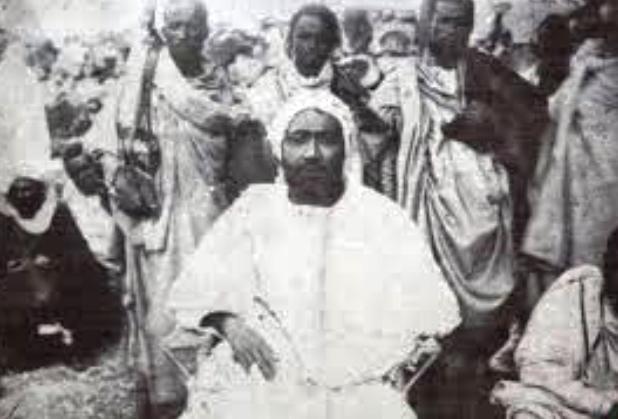
Jimma has been home to several influential figures in Ethiopian history, including:
- King Abba Jifar I and II: Legendary rulers of the Kingdom of Jimma who played pivotal roles in the city’s history.
- Mengistu Haile Mariam: Ethiopia’s former president, who led the country during the Derg regime.
- Abiy Ahmed: Ethiopia’s current prime minister and a Nobel Peace Prize laureate, who was born in the Jimma area.
Jimma continues to play an essential role in Ethiopia’s cultural, economic, and political landscape, offering a rich history, a thriving agricultural sector, and a promising future.

